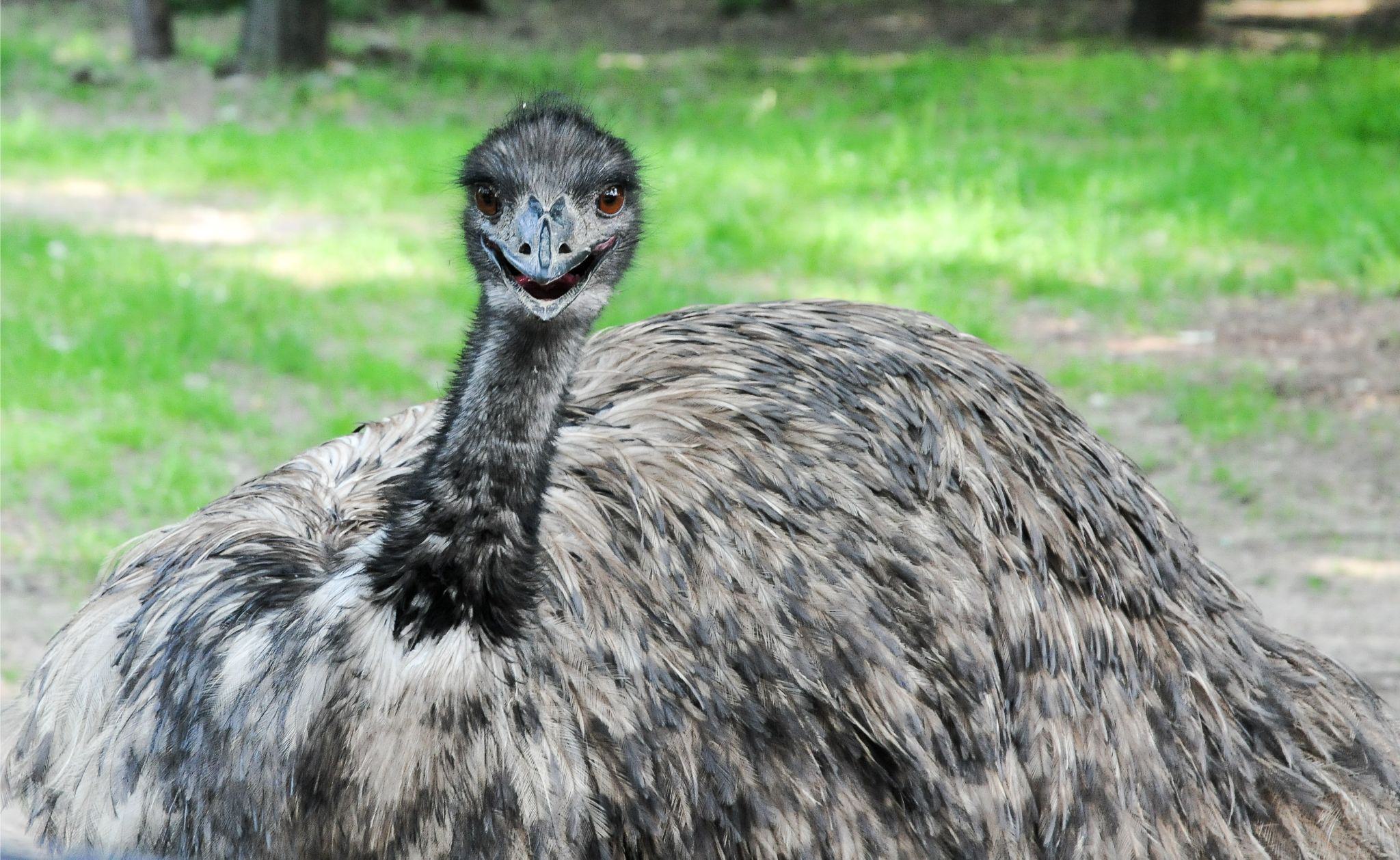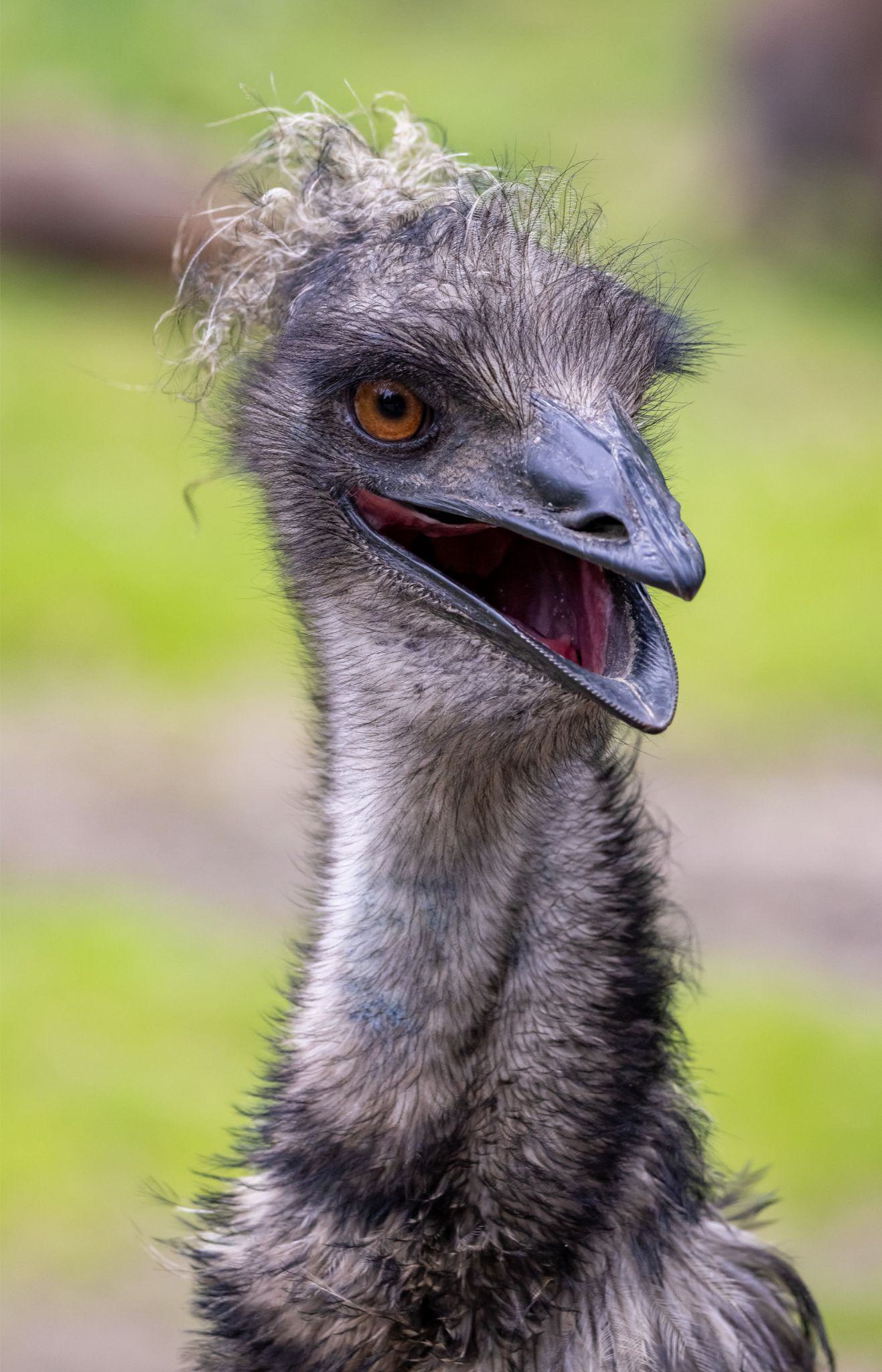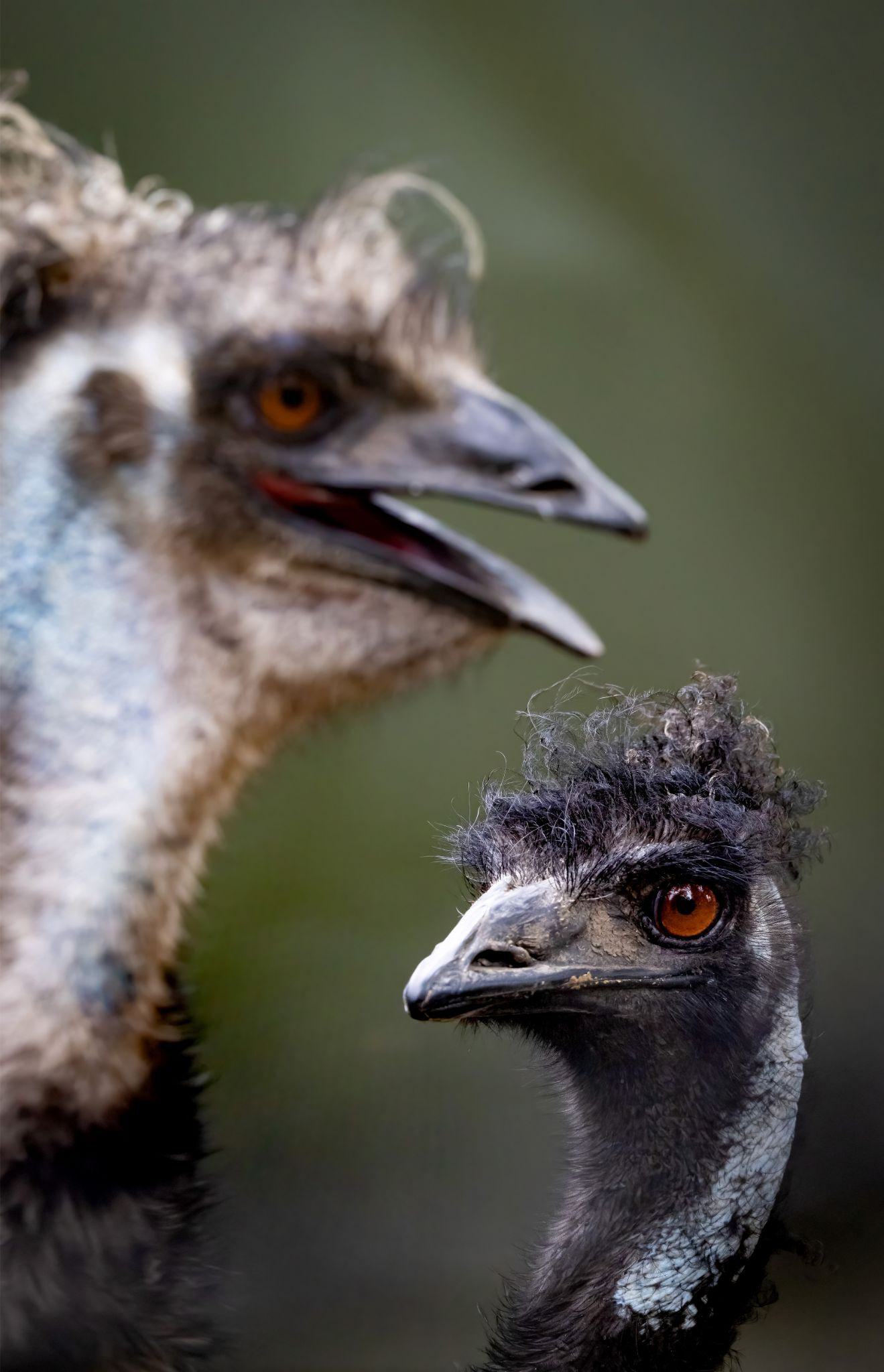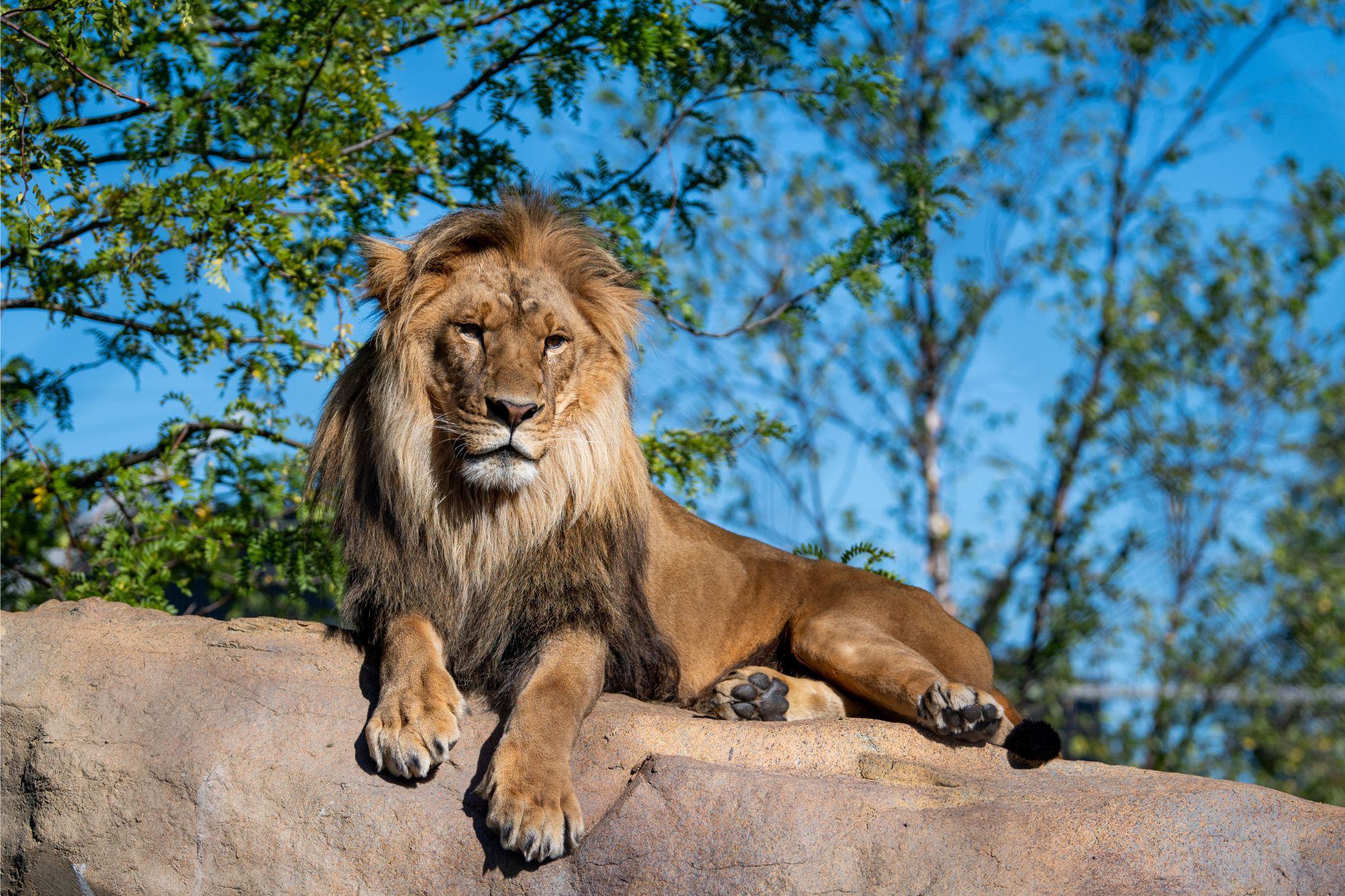
Emu
Distribution
Australia
Diet
Omnivore
Habitat
Grasslands
Latin Name
Dromaius novaehollandiae
IUCN conservation status
- Extinct
- Critically endangered
- Endangered
- Vulnerable
- Near threatened
- Least concern
Unable to fly, these cousins of the ostrich are the second-largest bird species on the planet.
Interesting informations

Strong Legs Carry Them for Miles Every Day to Find Food
Preferring plants with a high nutritional value (cereals, flowers), emus feed on insects, larvae and small vertebrates. These birds voluntarily ingest pebbles which facilitate their digestion by helping to crush their food. True nomads, they can travel more than ten kilometres per day in search of water and food.

Built for Speed and Endurance
Because they can't fly, emus rely on their muscular legs to help them flee at up to 50 km/h. Their legs, especially their claws, are also used to defend themselves against predators. Living in generally open environments, they rely on their huge eyes (5 cm in diameter) to perceive danger from afar.

Males Incubate the Eggs and Take Care of the Chicks
Generally solitary, couples form and occupy the same territory a few months before the female lays an egg. The male builds the nest, broods the eggs and cares for the chicks, often chasing his mate away during the brooding period. Until chicks can fend for themselves, the male maintains a high level of aggressivity towards other emus.
Ceci est un button text
Ceci est un button text
Domesticated for their Meat and Oil
The emu population is estimated to be about 700,000 in the wild. Numerous "anti-emu" fences have been erected everywhere to protect crops. In the United States alone, there are almost 1,500 farms where emus are bred, mainly for their fat, which is then used to produce a highly valued oil.


